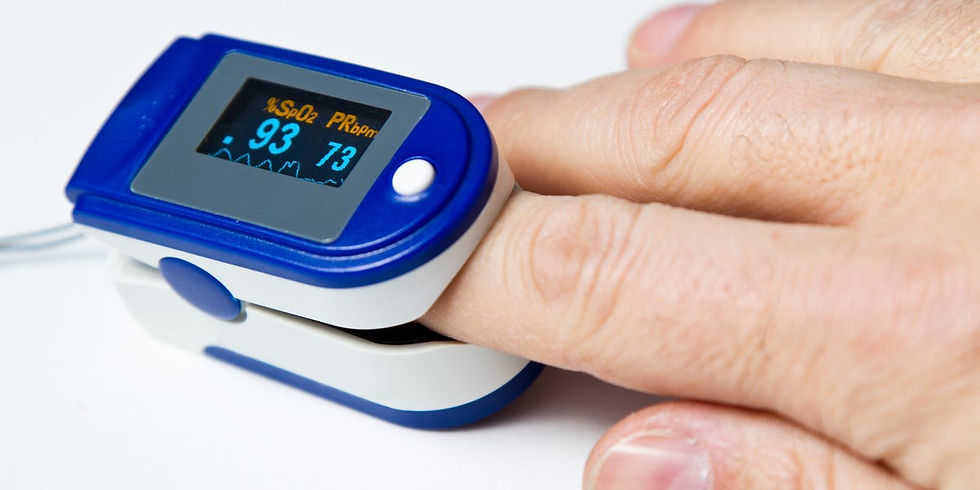COVID-19: What You Should Do Before Purchasing a Pulse Oximeter.
- Naheda Khan
- May 11, 2021
- 2 min read

Image credit: insider.com
As the second wave of the coronavirus sweeps through India, breaking regular records and taxing the country's health system and capability, experts are urging people to defend themselves and seek medical treatment if they develop Covid-19 symptoms. A decrease in oxygen levels is one of the most common signs, and delaying treatment will place the person at risk of serious complications and death. A pulse oximeter can assist in getting assistance faster by alerting the person to a decrease in oxygen levels. However, expert opinion is split on whether home surveillance by such devices can be advised on a wide scale due to the risk of missing a reading.
What is the purpose of a pulse oximeter?
A pulse oximeter is a lightweight, convenient gadget that looks like a fabric clip. An individual must insert one of their fingers (nail-side up) into the system, which then displays the oxygen saturation levels in the person's body in seconds (measured as a unit of SpO2). The majority of stable individuals have a reading of 95% or above. When an individual has an underlying health problem, the reading will fall below 95% in certain cases. In most cases, though, if the reading slips below 92-93 percent, the person should seek medical advice. The monitor also displays a reading of the heartbeat, which for a stable person ranges from 60 to 100 beats per minute.
What is the mechanism behind it?
When the finger is placed into the pulse oximeter, it beams various wavelengths of light into the bloodstream to determine the amount of oxygen sent to the region of the body farthest from the heart. Based on the level of oxygen carried, hemoglobin in the blood consumes various concentrations and wavelengths of light, giving a numerical reading of the measurement.
What's the point of doing it?
It is safe to keep a pulse oximeter at home to check your oxygen levels on a daily basis so that if your oxygen levels decrease, you can get medical help right away. The Delhi government agreed to administer oximeters to those in home isolation after being diagnosed with Covid-19 infection last year when the pandemic was at its height around June.
To help their work, Newsmusk allows writers to use primary sources. White papers, government data, initial reporting, and interviews with industry experts are only a few examples. Where relevant, we also cite original research from others respected publishers.
source: news18.com





















bos288, slot thailand, bos288, bos288, bos288, bos288, bos288,
slot gacor, bos288, slot88, bos288, bos288, slot gacor, slot gacor, slot qris,
link slot, raja168, slot gacor, raja168, slot, slot gacor, slot, raja168, raja168,
slot gacor, raja168, raja168, slot deposit dana, raja168, situs toto, situs slot gacor,
raja slot, situs toto, slot deposit qris, slot gacor, slot gacor, raja168, slot, raja168, slot dana,